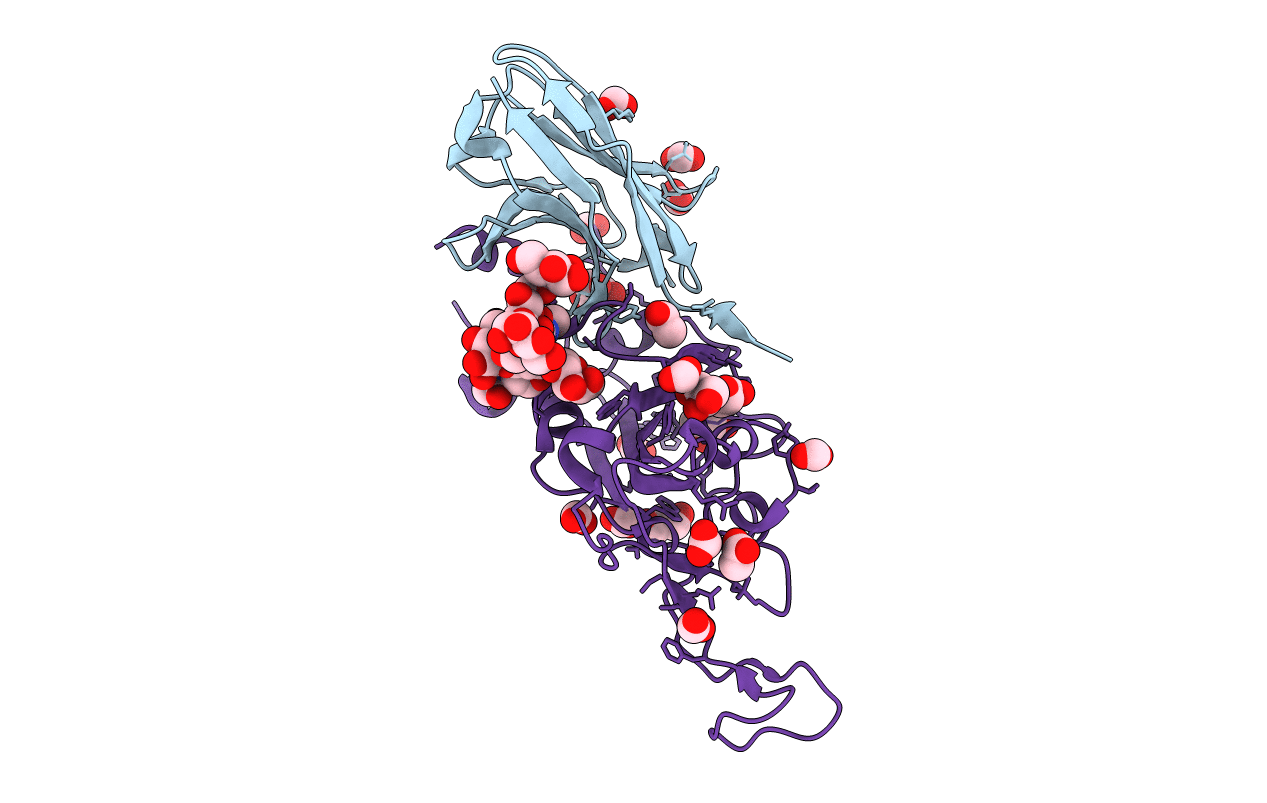
Deposition Date
2020-09-17
Release Date
2021-02-17
Last Version Date
2024-11-13
Entry Detail
PDB ID:
7D2Z
Keywords:
Title:
Structure of sybody SR31 in complex with the SARS-CoV-2 S Receptor Binding domain (RBD)
Biological Source:
Source Organism:
synthetic construct (Taxon ID: 32630)
Severe acute respiratory syndrome coronavirus 2 (Taxon ID: 2697049)
Severe acute respiratory syndrome coronavirus 2 (Taxon ID: 2697049)
Host Organism:
Method Details:
Experimental Method:
Resolution:
1.97 Å
R-Value Free:
0.20
R-Value Work:
0.18
R-Value Observed:
0.18
Space Group:
P 31 2 1


